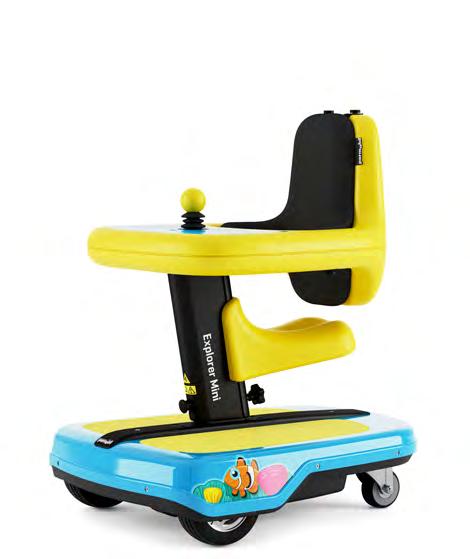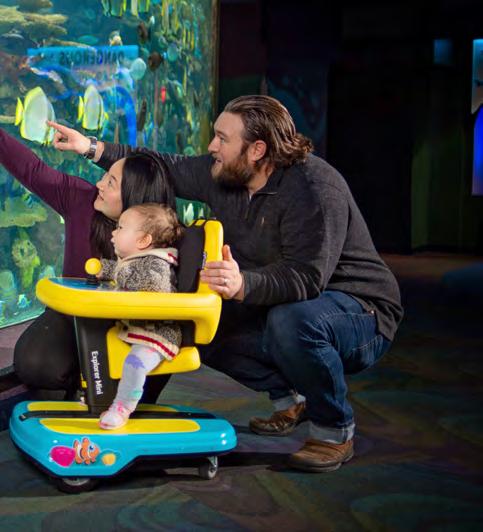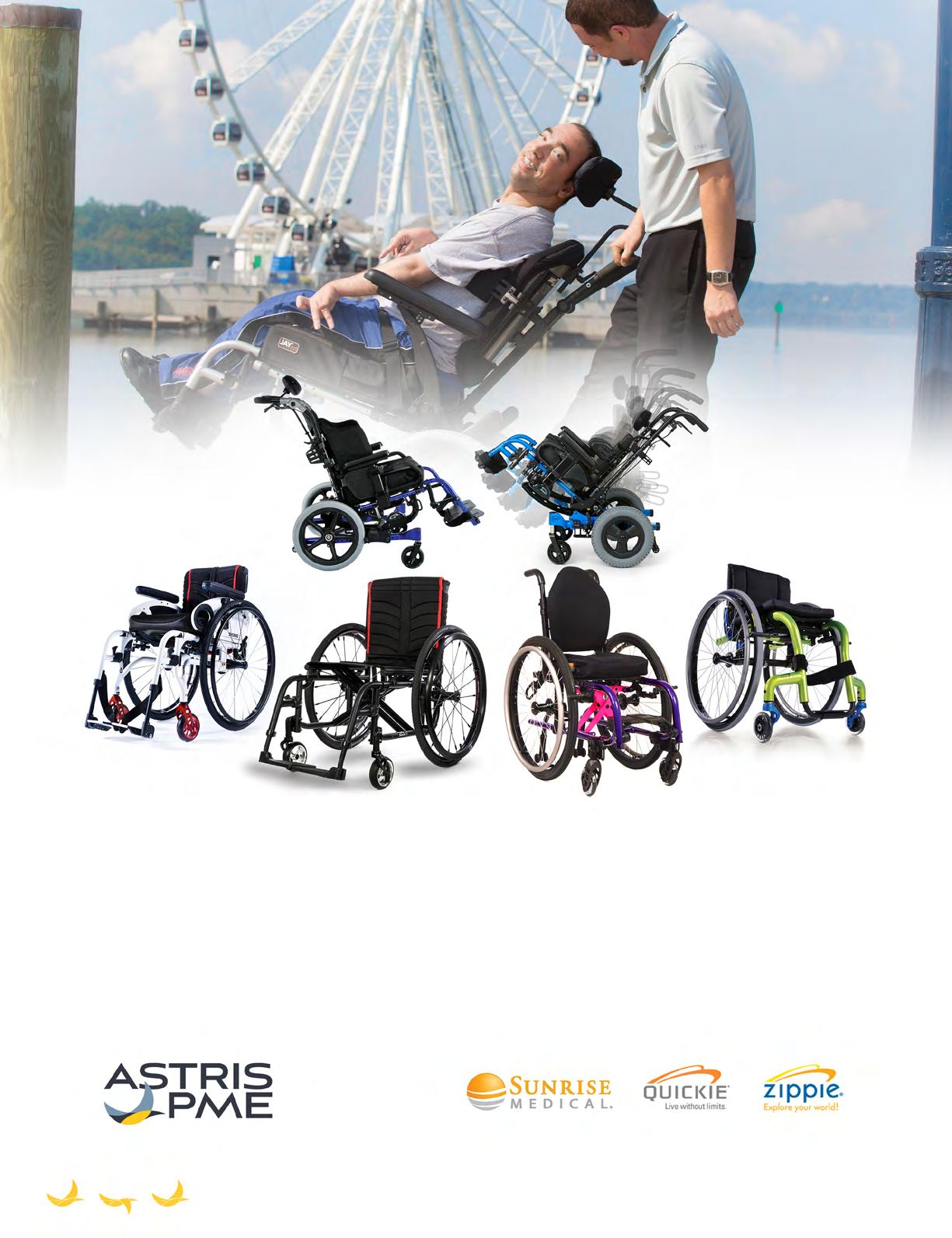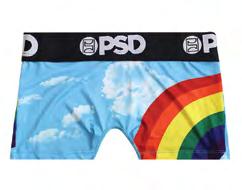
5 minute read
Encouraging independence and development through exploration
Encouraging independence & development through exploration
A young child's ability to explore their environment ushers in a cascading array of cognitive, social, emotional and spatial skills that together provide tremendous opportunities for growth.

In order to learn, children need SELF-INITIATED exploration: • If they cannot bring objects to their mouth, their language may be delayed because the oral muscles are not adequately stimulated. • If they cannot bring an object from one hand to the other and manipulate it around their hand, it is harder to learn size, shape or texture. • If they do not crawl or walk or have access to
EARLY mobility, they do not learn that their world is a 3-dimensional universe with walls, doors, toys, siblings or parents. • If they always have to wait until an adult brings them an object, curiosity is not fostered. • Crawling (or self-initiated mobility) provides children opportunities to learn about the environment and social relationships, as well as developing their own self-awareness. (Butler, 1991). • If children cannot move independently, their visual skills related to spatial relations may be delayed. So, without self-initiated mobility and exploration many aspects of development are at risk of being delayed.
PERMOBIL WANT TO HELP CHANGE THAT WITH THE NEW EXPLORER MINI
Self-initiated mobility is defined as movement that is controlled by an individual and may include: • ambulation (e.g. walking, crawling) • use of non-powered technology such as prosthetics, walking aids and manual wheelchairs • use of powered technology such as motorised wheelchairs and battery-operated ride-on toy cars (Logan, Hospodar, Feldner, Huang, &
Galloway, 2018) Powered technology is usually considered when other means of movement have not been successful. The problem with most power mobility devices is they were not truly designed for EARLY development. In fact, they are designed for “it’s really late-but let’s see if we can catch up” and compensate for what has been lost or never gained. Until now we have not been able to observe or examine the full benefits of early self-initiated mobility for young children with disabilities, as there has not been a truly appropriate mobility device. The Explorer Mini was specifically designed for these very young children to be placed in postures that will promote development and allow for selfinitiated mobility.
WHAT DOES SUCCESS LOOK LIKE FOR A CHILD WITH MOBILITY IMPAIRMENTS? In typical development, children need to work through their developmental milestones such as when learning to crawl. They often fail at first and keep trying until they’re successful. Parents don’t typically prop them up and “save them”, they let them struggle through. This is where the Explorer Mini can give a young child a safe opportunity to work through postures that may promote development when they otherwise would be unable to self-initiate mobility. It may take time and practice, but they can ultimately be successful with posture and independent movement.




PRODUCT FEATURES
Developmentally inspired seating The Explorer Mini is an ergonomic device with multiple weight bearing surfaces to help promote safe, stable upright postures. The intuitive design provides just the right amount of support enabling young children with mobility impairments opportunities to develop strength, endurance and postural control. Each element of the Explorer Mini was designed specifically for developmental milestones in early childhood.
Adjustable column
• Mini Explorer telescoping-column • Adjustable support for safe seated or standing position • Tool-free height adjustment supports growth • Adjustable seat height for peer interaction and exploration • Supports changing positioning for activities and incremental standing • Altering height taps into vestibular system
Saddle seat
• Gentle slope promotes anterior pelvic tilt • Positions knees in slight abduction supporting hip development • Allows forward/backward rocking to facilitate anterior to posterior development • Removable seat facilities independent standing
Midline joystick
• Small yellow ball-shaped handle is within visual fixation range for young children • Handle promotes reaching, visual and oral exploration • Encourages eyes and hands coming to midline • Promotes contact to volar (palm of hand) aspect of hand which leads to grasp and release and haptic perception which is recognising objects through touch • Promotes bilateral upper extremity integration
Upper extremity weight bearing surface
• Weight bearing on elbows helps promote head and trunk control • Develop body awareness through proprioceptive input • Aids in development of spinal curves • Supports respiratory function by helping to open rib cage
To find out more about the product features and the research supporting the development of the Explorer Mini visit the Permobil website and their paediatric blogs.
Astris PME provide an extensive range ofwheelchairs designed to match active lifestyles and express individuality.






ZIPPIE lightweightpaediatric manual wheelchairsare versatile and offera full range ofeasily tailored optionsand accessories, thatcan be tailored tosuita child’spersonalityand needs. TheQUICKIE manual wheelchairrange consistsofrigid lightweightwheelchairs, folding wheelchairsand positional tiltin space wheelchairsthatare designed toprovide premium control, excellentdriving performance and are highlyadjustable tosuitthe needsofeveryindividual.
Call us todayto arrange a free trial: 1300 131 884
Your ONE STOP, ONE SHOP provider of PSD Continence Underwear, Continence Swimwear, Bedding Protection and more from Australia’s leading Manufacturers


Phone: (03) 8201 7137 • Email: orders@topcattreasure.com.au • www.topcattreasure.com.au Showroom/Warehouse: 13/200 Canterbury Road, Bayswater North 3153


NEW CONTINENCE PRODUCTS Contemporary, comfortable, waterproof and reliable continence bedding and underwear for the whole family


TREASURE VELLIS NATIONAL HEALTHCARE MANAGER T: 1300 857 123 E: treasure.vellis@sleepcorp.com.au









